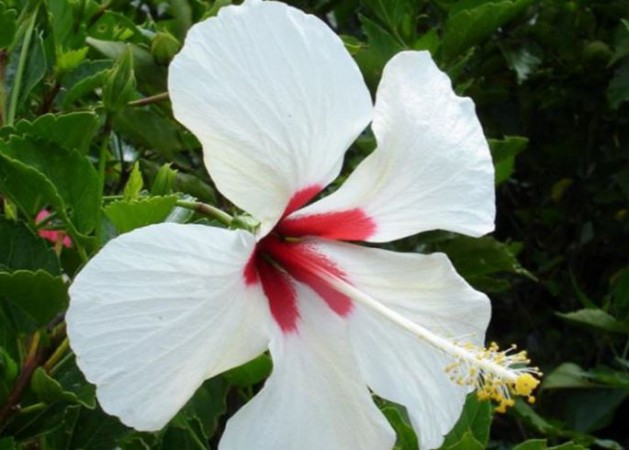
The Middle East is not only a region of vast deserts and ancient civilizations but also a land of breathtaking natural beauty. From lush oases to arid landscapes, the Middle East is home to a variety of unique flowers that have adapted to the diverse climatic conditions. In this article, we will explore seven fascinating flowers native to the Middle East, each with its own distinctive features, cultural significance, and historical importance.
1. The Desert Rose (Adenium obesum)
Description: The Desert Rose, also known as Sabi Star or Kudu, is a succulent plant with striking pink or white flowers. Despite its name, the Desert Rose thrives not only in desert regions but also in arid and tropical climates. Its thick, swollen stem serves as a water reservoir during dry periods, allowing it to survive in harsh conditions.
Cultural Significance: The Desert Rose holds cultural significance in the Middle East, where it is often associated with beauty and resilience. In some regions, the plant is believed to bring good luck and protect against negative energies.
2. The Tulip (Tulipa)
Description: The Tulip, known for its vibrant colors and elegant shape, is native to various regions, including parts of the Middle East. These perennial flowers have bulbous roots and bloom in a wide array of colors, symbolizing love, beauty, and new beginnings.
Historical Significance: Tulips have a fascinating history in the Middle East. They were cultivated and revered during the Ottoman Empire, becoming a symbol of wealth and prosperity. Today, tulip festivals continue to be celebrated in some Middle Eastern countries.
3. The Black Iris (Iris nigricans)
Description: The Black Iris is a captivating flower with velvety petals and a dark velvety hue. It is native to Israel and Jordan, primarily found in rocky terrains. This strikingly beautiful iris is known for its unique coloration and delicate appearance.
Conservation Status: Unfortunately, the Black Iris is currently classified as an endangered species due to habitat loss and overcollection. Conservation efforts are underway to protect and preserve this exquisite flower.
4. The Arabian Jasmine (Jasminum sambac)
Description: The Arabian Jasmine, also known as Sampaguita, is a fragrant and delicate white flower native to the Middle East and Southeast Asia. Its small, waxy blossoms release a sweet fragrance, making it a popular choice for perfumes and religious ceremonies.
Traditional Uses: In the Middle East, Arabian Jasmine is not only admired for its beauty and aroma but also valued for its traditional medicinal uses, including remedies for skin conditions and anxiety relief.
5. The Pink Rockrose (Cistus × incanus)
Description: The Pink Rockrose is a resilient flowering plant found in the Mediterranean region, including parts of the Middle East. It features pink petals with a yellow center and thrives in dry, rocky soils.
Medicinal Uses: The Pink Rockrose has a long history of medicinal use in the Middle East. It is believed to possess healing properties and has been used to treat various ailments, including respiratory issues and digestive problems.
6. The Date Palm (Phoenix dactylifera)
Description: The Date Palm is an iconic symbol of the Middle East and a crucial part of the region's cultural heritage. It produces sweet and nutritious dates and has been cultivated in the Middle East for thousands of years.
Economic Importance: The Date Palm holds immense economic significance, providing food, shelter, and materials for various industries in the region. It is considered a symbol of prosperity and hospitality.
7. The Red Poppy (Papaver rhoeas)
Description: The Red Poppy is a striking wildflower native to the Middle East, known for its bright red petals and distinctive black center. It thrives in disturbed soil, often appearing in fields and meadows.
Symbolism and Remembrance: The Red Poppy holds powerful symbolism in the Middle East, representing both beauty and the memory of fallen soldiers. In some cultures, it is associated with remembrance and paying tribute to those who sacrificed their lives in conflicts.
The Middle East is a treasure trove of floral wonders, each telling a unique story about the region's rich history, culture, and natural diversity. From the desert-adapted resilience of the Desert Rose to the elegant symbolism of the Tulip, these flowers reflect the timeless beauty and enduring spirit of the Middle East.
Outrage in Maharashtra: Leader Fadnavis Vows Action Against Those Defaming Savitribai Phule!
BREAKING: Gyanvapi ASI Survey, Allahabad HC Reserves Order For Aug 3
Mama Chicken Mama Franky House: A Culinary Journey from 2008 to Agra's Food Gem